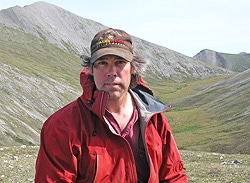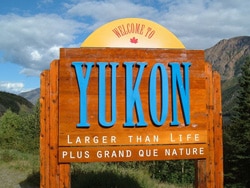Without the downturns in the exploration business that are as certain as the seasons, prospector Shawn Ryan might never have found the multi-million ounce White Gold deposit in the Yukon Territory currently owned by Kinross Gold Corporation.
His first setback came in 1989, shortly after the federal government re-jigged the super flow though financing program companies relied on to finance their exploration efforts on domestic soil. Funds dried up, and the 26-year-old lost his job working for an exploration team in the Timmins Camp where he was born.

Looking for a way to continue the bush life he was so drawn to, Ryan – the 2010 recipient of the PDAC’s Prospector of the Year award – found out he could earn up to $1,000 per day picking wild mushrooms in British Columbia, so he headed west.
“I said ‘you must be kidding me, won’t the cops chase me around’?” because he assumed the mushrooms in demand must be of the magic, hallucinogenic variety. “But I fell in love with picking mushrooms.”
A few years later, another downturn hit, this time in the gourmet mushroom market. By then Ryan had found a more romantic love in fellow mushroom picker Cathy Wood and the two decided to start a family, requiring a more stable life and income.
Most people would assume that meant full-time jobs with benefits, but Ryan and Wood took up prospecting from a tin shack home outside Dawson City instead. Ryan had a hunch that deposits of the kind that had produced the millions of ounces of placer gold found during the Klondike rush were still lurking under the Yukon soil. He set about proving his theory with a rigorous soil sampling program.
But bad luck would strike again. “We decided to do this in 1996, and then we were hit by Bre-X scandal. You couldn’t sell anything, and everyone left the bush,” says Ryan.
Once again, the setback turned out to be a blessing because it allowed Ryan five years to continue his research, refine his soil sampling method, and prove up a mineralized system that exploration companies would be interested in optioning once the cycle turned up. During that time, he and his family lived on the roughly $10,000 per year Ryan received from the Yukon Mining Incentive Program.
His well-considered methodology was a key factor in his success. Instead of the conventional technique of sampling the top six inches of the soil profile, Shawn realized he would have to dig about 2.5 ft. under to find the gold that had eroded from bedrock millions of years ago, undisturbed by the glaciation that scraped many of Canada’s other mining camps clean.
In 2002 Ryan honed in on an area within the Stewart map sheet where the government had just completed an airborne survey and uncovered geophysical anomalies near an old copper showing.
“The area lit up over five miles with a nice copper-gold anomaly, and the deeper soils were responding like crazy in the district” says Ryan, who was using tulip bulb diggers from Holland to take his initial samples. “That was when we knew that large soil sampling programs in the Yukon will outline large mineralized systems if you have the budget to take lots of samples.”
The first indications of the White Gold deposit north of Dawson City, now believed to contain about two million ounces of gold, were to follow.
Ryan says a combination of technologies, including GPS and GIS, have allowed him to process geochemical data in the way only major companies had the resources to do just 15 years ago. Using a team he trains though his contracting company, he’ll take an astounding 185,000 soil samples for companies that have optioned his properties this year, up from 2,500 samples in 2003 and 70,000 samples last year.
“That way, the technique and assaying remains the same for all the properties, and I get the master database at the end of the year,” says Ryan, currently president of Ryan Gold, which will be account for almost half of this year’s sampling total. “So if the camp is eventually amalgamated, then the soil database remains consistent.”
And because the region’s gold deposits have small footprints not visible from surface, every sample counts. For example, one of the main zones at the significant Coffee project optioned by Kaminak Gold Corporation announced itself in only one sample. White Gold showed up in just two.
His crack team of samplers consists of a combination of university undergraduates and a full-time crew. “They have to be in good shape and they have to be team players. Cathy is into soccer, so she likes soccer players. Sometimes I think she’s making a team on the side.”
The creation of Ryan Gold releases Ryan and Wood from their administrative duties, allowing them to focus on finding new areas of interest in the district, and giving them more time to spend canoeing with their two children, ages 12 and 14.
Ryan says the White Gold district will remain at the geochemical exploration stage while companies can still find deposits close to surface using soil sampling (there is virtually no bedrock in the area). He is expecting at least six significant discoveries over the next few years before the camp begins to rely heavily on geophysics to find deeper orebodies.
His advice to explorers just setting out on their careers? “This nut was cracked with science, not by skipping steps. Let the science be the judge of whether you continue exploring or not, and lead you to the true anomalies.”





